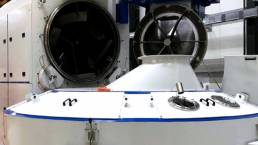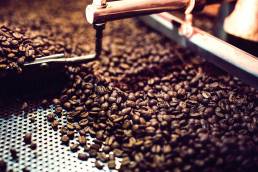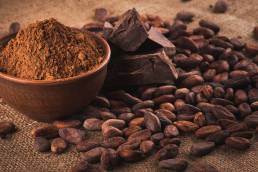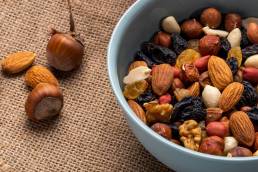Coffee roasters
"COFFEETEC" range: Industrial roasters for premium coffee
State-of-the-art technology, highest requirements

COFFEETEC Range: Production capacity of 1,500–4,000 kg coffee per hour
COFFEETEC roasters are designed for roasting traditional and special green coffee beans of regular or irregular size, especially for fast and extremely precise roasting. Roasting by the natural method, with no additives.
Production capacity of 1,500–4,000 kg coffee per hour, depending on roast parameters.
Technical Characteristics
- Capacity of 300–720 kg coffee per cycle Roasting drum
- 1,500–4,000 kg coffee roasted per hour
- Furnace with electronic progressive gas or diesel burner; low emissions
- Covered circular cooler with dual aspiration system
- Chaff collector
- Dual PLC control panels and SIEMENS/AB colour HMI Green coffee preheating system
- Green coffee preheating system
- Smoke afterburner with or without catalyst
| Capacidad por tostado | Tiempo por ciclo | |
|---|---|---|
| TNA-1500 / COFFEETEC | 150-300 Kg por ciclo | 8 - 20 minutos |
| TNA-2000 / COFFEETEC | 200-400 Kg por ciclo | 8 - 20 minutos |
| TNA-3000 / COFFEETEC | 300-600 Kg por ciclo | 8 - 20 minutos |
| TNA-4000 / COFFEETEC | 330-660 Kg por ciclo | 8 - 20 minutos |
Premium range of roasters for natural coffee, guaranteeing the highest quality standards achievable today with respect to manufacturing, hourly production capacity and operational performance.
Coffee is roasted in a double-walled roasting drum perforated only in the rear section to ensure effective air flow. Roasting capacity of 1,500–4,000 kg coffee per hour.
COFFEETEC range configuration should be customised, as this range tends to be used to produce a specific range of products. The objective is to achieve the highest quality possible in the required product, with the maximum possible returns.
COFFEETEC roasters can operate at half or full nominal load, at the same roasting temperature and producing the same roast profile. To achieve this, the PLC allows unlimited roast profiles that are automatically adjusted so they can be replicated exactly from one cycle to the next.
Heat is mainly transferred by convection, although there is also some conduction. Convection, and short roast times, allows quicker and more homogeneous roasts, and develops larger beans.
WHAT ARE THE MAIN FEATURES OF THE ‘COFFEETEC’ RANGE?
The COFFEETEC range has been designed for specialisation: each roaster is customised for the particular coffee to be produced, allowing roast profiles from espresso to instant coffee for maximum returns. Machinery manufactured to the most rigorous standards to meet extremely strict technical requirements and enable large production capacities.
Roast time in COFFEETEC range roasters is 7–15 minutes. Short roast times accentuate acidity in the coffee bean, and longer roasts promote body. All roasters in the range can operate at half or full nominal load, and the PLC adjusts times and temperatures for a consistent roast profile.
- Homogeneous colour thanks to the method of heating the coffee bean, which is mainly convection (heat transfer from hot air) with some conduction (heat transfer from the roasting drum)
- Carbon steel or food grade stainless steel roasting drum with a variety of mixing paddles available in customised materials. Coffee moved evenly and carefully in the roasting drum to prevent damage to the bean. There are no perforations in the cylindrical part of the roasting drum, just the base, to facilitate air flow through the coffee beans. The roasting drum is double-walled, creating an insulating air chamber that minimises heat transfer by conduction.
- Completely retractable roasting drum door with easy mechanical operation, enabling full access to the roasting drum within a few minutes to facilitate maintenance.
- Degrees of roast, from light to dark, with the same capacity per cycle.
- Short and long roast times, with the same capacity per cycle.
- Weight loss depends on the moisture level in the green coffee bean, and can be compensated by the quenching system at the end of the roasting process.
- Rapid and careful cooling to prevent damage to the coffee bean Covered cooler.
- Roasting and cooling cycles are synchronised and occur simultaneously
- Roasters are equipped with green coffee preheaters, hot air recirculation, electronic burners, dual PLC and smoke afterburners with catalysts.
WHY CHOOSE THE ‘COFFEETEC’ RANGE?
The COFFEETEC range is the best solution for specialised batches of the highest quality. The design, development and manufacture of the COFFEETEC range roasters comply with the most stringent standards that can currently be achieved.
All components of the COFFEETEC range roasters are controlled by dual PLC, with SIEMENS or ROCKWELL HMI with synchronised backup systems and local network or internet PC SCADA for remote access. Comprehensive user interface which is programmable, remotely accessible and customisable at all times
There is no limit to the number of recipes that can be stored by the control system, so the roasting process can be adapted to the various roasting profiles required by the production program
COFFEETEC range software includes a product traceability system, which enables batch numbers and process quality to be managed.
Temperature curves and process parameters are visualised and stored in each roasting cycle.
WHAT SPECIFIC FEATURES ARE INCLUDED?
Los equipos garantizan el grado máximo de rendimiento y seguridad en su funcionamiento
- Compliance with local safety regulations related to the machinery, products and staff operating the roaster Potential to update parameters in response to new regulations in the future
- Maintenance and repair protocol. Immediate availability of standard parts that affect machine safety. Maintenance time minimised Maintenance time minimised Downtime for maintenance: 30 minutes every 24-hour period of continuous operation.
- Quick and easy access to clean the roaster and replace worn parts.
- Temperature and air pressure sensors installed in roaster heat sources and air ducts, to control roaster heat balance and prevent overheating and heat venting.
- Automated fire prevention systems, water injectors and burner operation monitoring.
- Energy-saving devices including hot air recirculation, preheating green coffee, use of renewable energy sources, low-emission mixed electronic burners, catalysts and cleaning procedures using closed-loop water systems.



